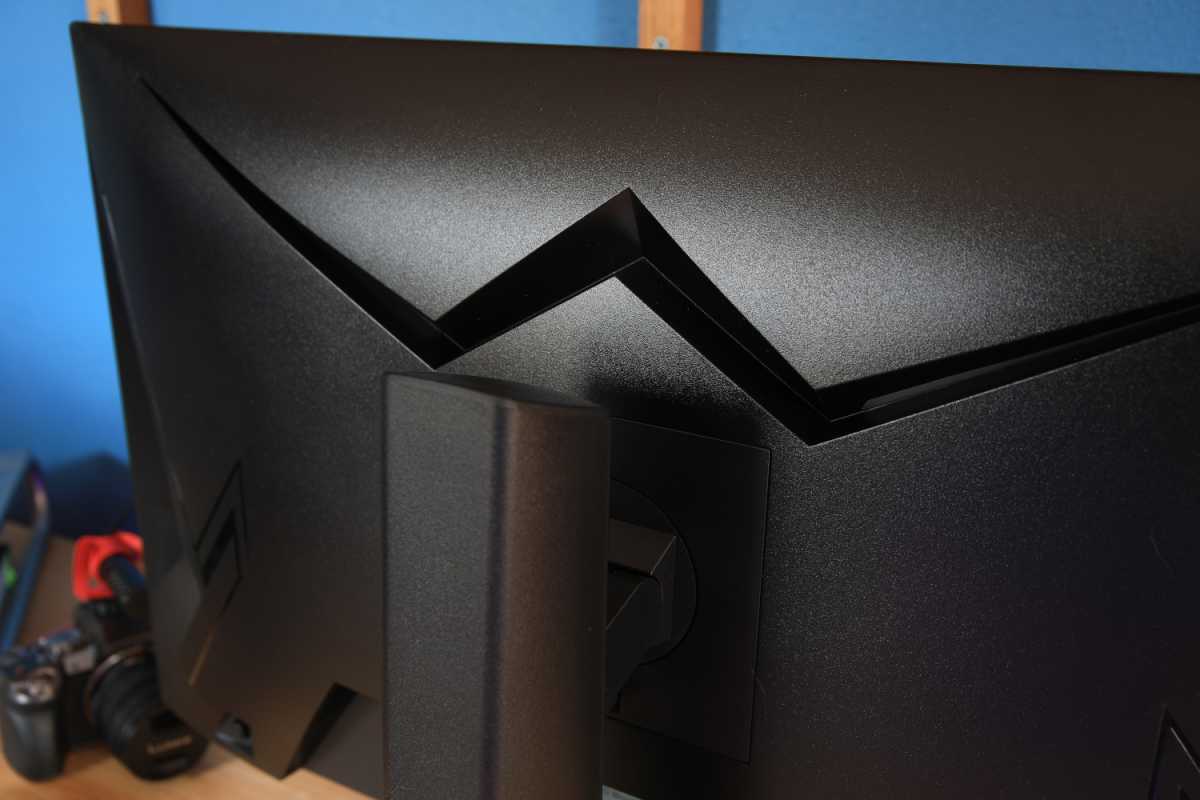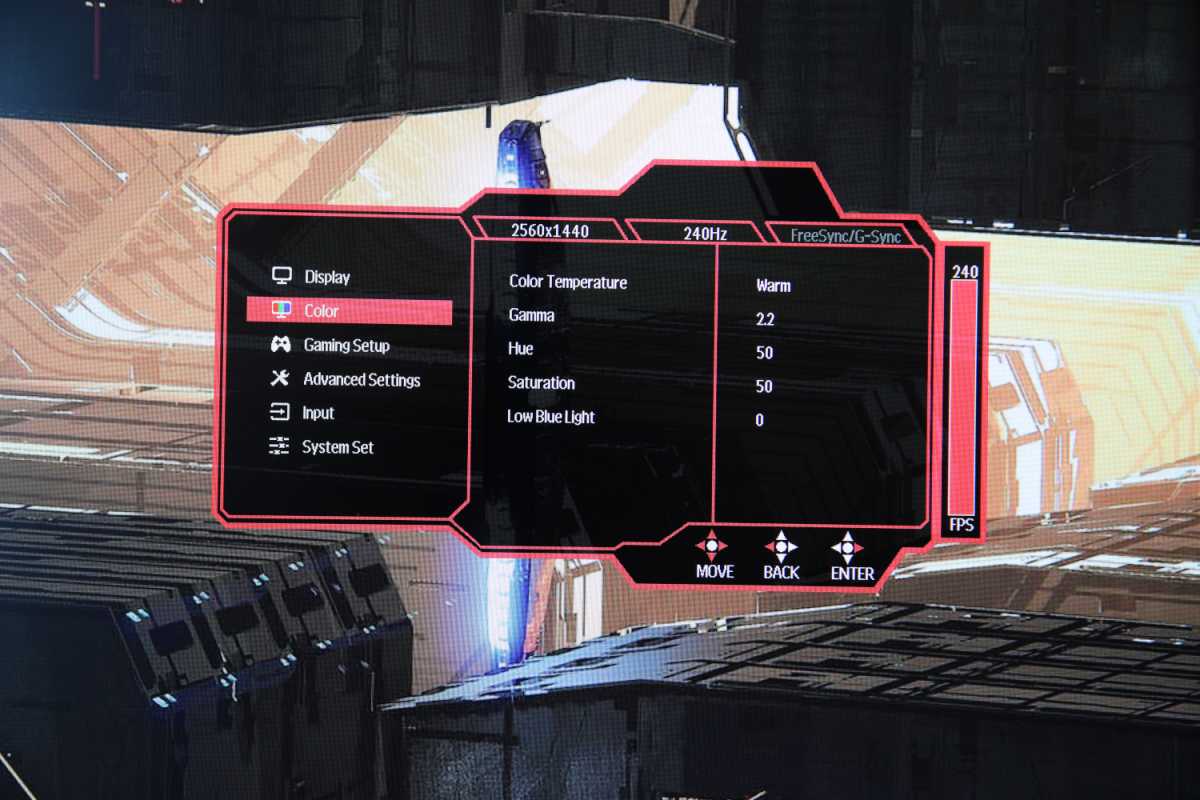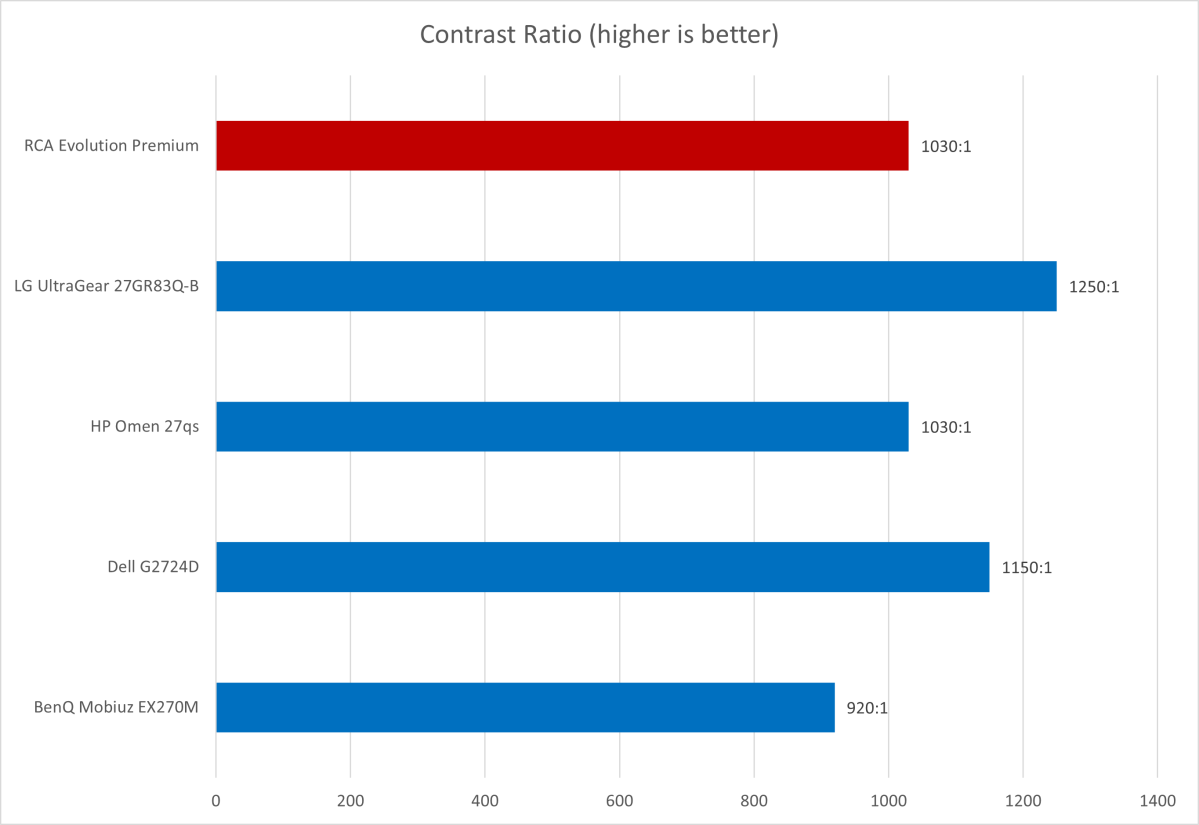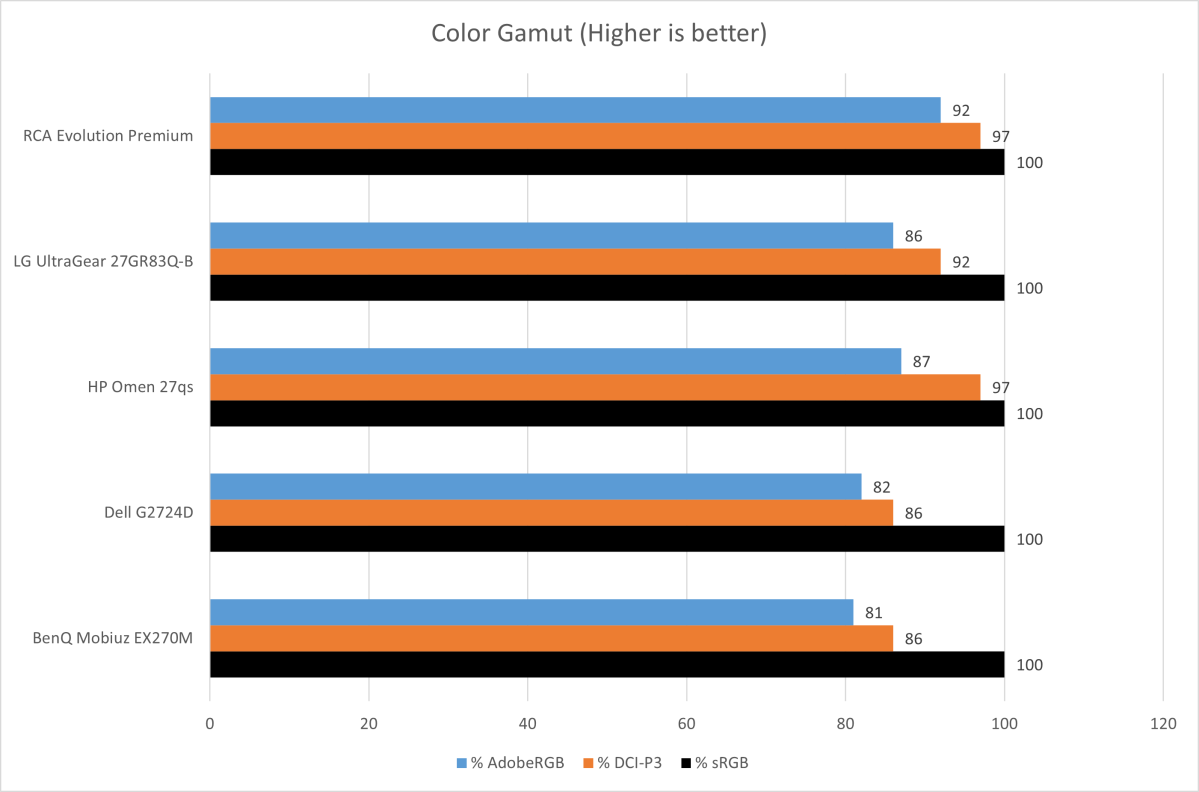RCA Evolution Premium review: A monitor for work and gameplay

 Image: Matt Smith/Foundry
Image: Matt Smith/FoundryAt a glance
Expert’s Rating
Pros
Sharp, vibrant imageGreat motion clarityOfficial AMD FreeSync and G-Sync Compatible supportConnectivity includes USB-C with Power Delivery
Cons
Dull, unimpressive designStand is too large and annoying to set upA tad more expensive than some 1440p, 240Hz alternatives
Our Verdict
The RCA Evolution Premium botches the stand, but it’s a solid 1440p, 240Hz that works well for gaming and productivity.
Price When Reviewed
$429
Best Prices Today: RCA Evolution Premium
RetailerPriceRCA$429View DealPrice comparison from over 24,000 stores worldwideProductPricePrice comparison from Backmarket
Remember RCA? Your answer probably depends on your age: Those who’ve yet to experience a mid-life crisis likely don’t. I was surprised, then, to hear that RCA planned to force its way into the packed gaming monitor arena with the Evolution Premium. RCA’s first gaming monitor makes a few rookie mistakes, but its motion clarity and USB-C connectivity will be appealing if you want a monitor for gaming and productivity.
Further reading: See our roundup of the best gaming monitors to learn about competing products.
RCA Evolution Premium (M27PG135F) specs & features
The RCA Evolution Premium M27PG135F is a 27-inch widescreen monitor with a native resolution of 2560×1440 and a 240Hz refresh rate. It joins a growing list of monitors that offer the same, such as the HP Omen 27qs, LG Ultragear 27GR83Q-B, and Alienware AW2723DF.
Display size: 27-inch widescreenNative resolution: 2560×1440Panel type: In-Plane Switching (IPS)Refresh rate: 240HzAdaptive Sync: AMD FreeSync, G-Sync CompatibleHDR: HDR10Ports: 1x DisplayPort 1.4, 2x HDMI 2.0, 1x USB-C with 90 watts Power Delivery, 2x USB-A downstream, 1x USB-BVESA mount: 100x100mmSpeakers: YesPrice: $429 MSRP
RCA also has a 27-inch, 1440p, 165Hz Evolution monitor with a lower MSRP of $299. While the two seem similar on paper aside from the difference in refresh rate, I suspect the less expensive RCA monitor has a different display panel. This review only applies to the Evolution Premium.
RCA Evolution Premium design
RCA’s monitor looks attractive from the front with slim red bezels and a red accent along the stand base, but the rear profile is less appealing. The plastics have a sheen reminiscent of inexpensive toys and lack a pleasant texture. RCA throws in colored LED accents, but they’re rather dim. These are small details—most people don’t mind what a monitor looks like from the rear. Still, monitors from Asus, Dell, and LG look more substantial.
I’m not a fan of the stand, either. It’s a tripod design that’s nearly as wide as the monitor’s display panel. That’s large for a 27-inch monitor and can prove annoying when the monitor is used on a small desk. The stand’s rear leg also extends a couple inches beyond the rear of the display, which means the stand can’t be placed flush with the rear of a desk. That’s a problem if your desk is shallow.
RCA strangely requires the installation of three provided Phillips-head screws to secure the stand’s base to the stand neck. It’s another small but annoying issue. The screws are easy enough to install, but most monitors in this price bracket use a single screw that can be tightened by hand.
It’s not all bad news. The wide stand keeps the monitor well planted on a desk and includes significant ergonomic adjustment for height, tilt, and swivel. It also pivots 90 degrees for use in portrait mode.
Still, the RCA Evolution Premium’s design makes the company’s inexperience clear. The monitor looks boring, the stand is more difficult to assemble than it should be, and it takes up too much space on a desk.

The back of the RCA Evolution Premium monitor.
The back of the RCA Evolution Premium monitor.
Matt Smith/Foundry
The back of the RCA Evolution Premium monitor.
Matt Smith/Foundry
Matt Smith/Foundry
RCA Evolution Premium connectivity and menus
RCA’s design is a miss, but it comes back swinging in connectivity. The Evolution Premium has an excellent selection of ports that outpaces most competitors.
Video connectivity includes two HDMI ports, one DisplayPort, and one USB-C with DisplayPort Alternate Mode. The HDMI ports conform to the HDMI 2.0 specifications, which unfortunately means they’re limited to a maximum refresh rate of 144Hz at the monitor’s native resolution of 2560×1440. Both the DisplayPort and USB-C port can handle 240Hz at 1440p, however, so it’s only a problem if you plan to connect three or more computers simultaneously.
The USB-C port supports 90 watts of USB Power Delivery and passes data to two downstream USB-A 3.2 Gen 1 ports. This is an excellent feature that, while no longer rare, remains uncommon among gaming monitors. You can use the DisplayPort port to connect a desktop PC and rely on the USB-C port to dock and charge a laptop or tablet.
A USB-B upstream port is available for connecting older PCs that lack USB-C to the USB-A ports (USB-B doesn’t support Power Delivery or DisplayPort, however).
The monitor’s on-screen menu options are extensive and controlled by a responsive joystick hidden on the monitor’s rear right flank. RCA provides all the image quality options I’d expect including multiple color calibration, color temperature, and gamma settings. Most gaming monitors provide similar settings, but it’s not always the case—even in most expensive monitors. The range of image quality customization is good news for content creators, since it helps dial in the image to fit your work.
The monitor’s gaming options include the usual trio: a timer, crosshair, and frame rate counter. There’s also a “Black Equalizer” feature that can boost the brightness of dark areas of the display to reveal foes, though it’s found in the general Display sub-menu instead of the Gaming sub-menu.

The RCA Evolution Premium on-screen menu.
The RCA Evolution Premium on-screen menu.
Matt Smith/Foundry
The RCA Evolution Premium on-screen menu.
Matt Smith/Foundry
Matt Smith/Foundry
How is the Evolution Premium’s SDR image quality?
The RCA Evolution Premium has an In-Plane Switching (IPS) display panel with a native resolution of 2560×1440 and a refresh rate of 240Hz. This resolution and refresh was once rare, but a new generation of such monitors hit stores in the spring and summer of 2023. The RCA Evolution Premium’s image quality is similar to these alternatives, but it has a couple perks.

Matt Smith/Foundry
Matt Smith/Foundry
Matt Smith/Foundry
Brightness, it turns out, isn’t one of them. The monitor has a maximum SDR brightness of just 339 nits, which is towards the low end of what’s possible from competitors. Brightness is usually less important for a gaming monitor, though, as it’s likely to be used in a space with some light control. I doubt many will find the monitor too dim.

Matt Smith/Foundry
Matt Smith/Foundry
Matt Smith/Foundry
The RCA’s has a maximum measured contrast ratio of 1030:1, which is typical for an IPS display that lacks dynamic local dimming. It’s a modest result in 2023 and leads to image quality issues when viewing dark scenes in a dark room. The monitor can’t achieve a deep, inky black level, instead settling for a hazy gray.
But the same is true for other monitors in this category. Monitors with a Vertical Alignment (VA) panel can do better, providing a typical contrast ratio around 3000:1. Those monitors fall behind IPS displays in motion clarity, however.

Matt Smith/Foundry
Matt Smith/Foundry
Matt Smith/Foundry
RCA scores a win in color gamut. It achieves 100 percent of sRGB, 97 percent of DCI-P3, and 92 percent of AdobeRGB. A color gamut this broad defeats most similar monitors, which means the RCA Evolution can display more colors overall, though the HP Omen 27qs is similar.
The color gamut is a win for gamers who also create content for YouTube, Twitch, or other platforms. It’s not wide enough to handle the most demanding workloads, but it’s enough to offer an edge when editing content for the web.

Matt Smith/Foundry
Matt Smith/Foundry
Matt Smith/Foundry
The monitor’s 240Hz IPS panel delivers good motion clarity straight out of the box. Scrolling test images from League of Legends shows character silhouettes are readily identifiable and hitpoint bars are legible.
Color accuracy falls behind some competitors, but it’s close enough. The difference in color error between the HP Omen 27qs, Dell G2724D, and RCA Evolution Premium would be difficult to notice even in a side-by-side comparison. More importantly, the RCA’s color accuracy is enough to provide a realistic and lifelike image.
The RCA also nails our preferred gamma curve value of 2.2, which means content looks as bright as intended. That’s important for preserving detail in dark or bright scenes.
Color temperature is a problem, though, as the monitor displayed a default color temperature of 7900K, which is way off our target color temperature of 6500K. That means the RCA appeared far too cool and sterile compared to other monitors. This problem is partially resolved by switching the monitor to the “Warm” color temperature preset, which lowered the color temperature to an acceptable 6800K. But those who prefer a warm, reddish color temperature (such as 5600K) will need to use display calibration software, since a warmer color temperature preset is not provided.
Sharpness is an advantage. The monitor’s 2560×1440 resolution provides roughly 109 pixels per inch across the 27-inch widescreen display panel. That’s nowhere near a 4K panel of the same size, which hits 163 ppi, but much better than a 1080p panel, which provides just 82 ppi. Games look crisp and small fonts show little pixelation or aliasing, though it can become noticeable when viewing very small fonts.
The RCA’s image quality has its ups and downs, but it averages to a good result. It provides a wider color gamut than most alternatives and remains competitive in contrast. These traits come together for a crisp, vibrant image.
How is the Evolution Premium’s HDR image quality?
The RCA Evolution Premium is “HDR ready,” which means it can accept an HDR10 signal. It’s not VESA DisplayHDR certified and doesn’t promise a particular level of HDR performance.
That’s bad news for HDR. The monitor displayed a maximum sustained brightness of 369 nits in HDR which, though higher than SDR, is still far short of what’s required for a quality experience. The monitor also lacks dynamic local dimming, so it can’t increase the brightness of a single point without also increasing the brightness of darker areas of the display. The RCA Evolution Premium is technically HDR capable, but it shouldn’t be purchased if you care about HDR.
The same is true of RCA’s competitors, however, so I don’t count this as a mark against the monitor. Even the least expensive monitors with decent HDR retail well above $500, and the best HDR monitors usually retail above $1,000. Those who want HDR need to increase their budget—it’s not yet available at $500 and below.
How is the Evolution Premium’s motion performance?
Motion performance is critical for the RCA Evolution Premium and, fortunately, it doesn’t disappoint.
The monitor’s 240Hz IPS panel delivers good motion clarity straight out of the box. Scrolling test images from League of Legends shows character silhouettes are readily identifiable and hitpoint bars are legible. Character names are barely readable, however—a 360Hz or 500Hz refresh rate is required to preserve detail there.
3D games also benefit from this clarity. The details of your surroundings remain visible when quickly moving the camera, and small objects are easy to make out. Some details are still lost, and fast moving-objects remain blurred, but the result is visibly better than 144Hz and a huge leap over 60Hz. And the RCA Evolution Premium’s clarity is competitive with other 240Hz, 1440p displays in its price range.
RCA provides a Motion Picture Responsive Time (MPRT) feature that strobes the backlight at a high frequency. This has the effect of reducing motion blur, though it does so at the cost of brightness. I found the feature effective. MPRT can create a “double image” effect around a fast-moving object, but it’s rarely distracting. The reduction of brightness is noticeable and can be a problem if you game in a bright room, but won’t cause an issue if you dim the lights.
The monitor supports adaptive sync through AMD FreeSync and Nvidia G-Sync Compatible. This minimizes screen tearing and assists with consistent frame delivery, which helps provide smooth motion in games. The feature worked well in my testing. It’s not compatible with MPRT, however (which is true of most, though not all, monitors with adaptive sync). It’s also off by default, so be sure to flip it on if you want adaptive sync.
Should you buy the RCA Evolution Premium?
The RCA Evolution Premium is a good first salvo into the monitor market. It delivers attractive image quality, excellent motion clarity, and tons of connectivity, which helps it straddle the line between gaming, content creation, and home office productivity. Its $429 MSRP places it towards the high end of the current 27-inch, 1440p, 240Hz arena, and RCA needs to rethink the monitor’s stand design. Still, the Evolution Premium fits a niche for gamers who want the speed of a 240Hz alongside versatile connectivity and extensive image quality options.
Best Prices Today: RCA Evolution Premium
RetailerPriceRCA$429View DealPrice comparison from over 24,000 stores worldwideProductPricePrice comparison from Backmarket
Author: Matthew S. Smith
Matthew S. Smith is a freelance technology journalist with 15 years of experience reviewing consumer electronics. In addition to PCWorld, his work can be found on Wired, Ars Technica, Digital Trends, Reviewed, IGN, and Lifewire. Matthew also covers AI and the metaverse for IEEE Spectrum and runs Computer Gaming Yesterday, a YouTube channel devoted to PC gaming history.
Recent stories by Matthew S. Smith:
Best monitor arms 2024: The ultimate in flexibilityPixio PX248 Wave review: A monitor for fashion, flair, and clarity on a budgetBest portable monitors 2024: Displays that go with you







